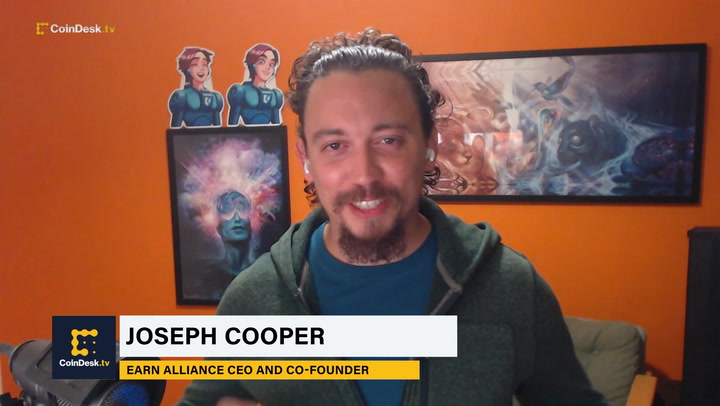Sonic SVM, Gaming Project on Solana Blockchain, Plans $12.8M Node Sale
-
Sonic SVM has built its own framework, HyperGrid, which can be used to spin up new networks called “grids” that ultimately settle to the Solana blockchain.
-
The sale is scheduled for the week of Sept. 16 and will include 50,000 “HyperFuse nodes” in 20 pricing tiers.
-
The nodes come with token rewards and allow holders to monitor the network state.
-
“While not officially confirmed, there are possible future airdrops for node operators,” according to a press release.

17:22
Earn Alliance CEO on Helping Gamers Discover Web3

10:09
Messari CEO Ryan Selkis on Future of Crypto’s Role in Politics

01:21
Web3 Gaming Market Still Growing in 2023: Game7 Data

08:11
State of Web3 Gaming in 2023
Sonic SVM, a project to scale the Solana blockchain to gaming-quality speed and throughput, plans to sell as much as $12.8 million worth of validator nodes in its HyperGrid, a decentralized framework designed to support new application-specific networks.
The sale, scheduled for the week of Sept. 16, will be the first in the Solana blockchain ecosystem and will include 50,000 “Hyperfuse nodes” in 20 pricing tiers, according to the team. Proceeds will go into the project’s treasury for general purposes, including supporting the development team and grants, CEO and co-founder Chris Zhu said in an interview.
Node sales have been growing in popularity as a way for blockchain projects to raise funds while simultaneously decentralizing their networks. Aethir, a decentralized GPU cloud infrastructure provider, disclosed in May that it raised about $126 million in Ethereum’s ether (ETH) token by distributing more than 73,000 node licenses. Other projects including Sophon, CARV, XAI Games and Powerloom have used the method to bring in fresh funds.
The sale comes just a couple of months after Sonic SVM raised $12 million in a Series A fundraising led by Bitkraft and joined by investors including Galaxy Interactive and Big Brain Holdings.
Purchasers of the nodes will qualify for token rewards while also contributing to the HyperGrid network security, according to a thread on X. The nodes can be set up to run on a laptop or cloud servers.
“Being a node operator actually allows them to monitor the HyperGrid state, which means they participate in the validation,” Zhu said.
Solana’s OP Stack
Under the project’s architecture, Sonic SVM itself is considered a “grid” built atop a blockchain apparatus known as the HyperGrid. That, in turn, provides the interface for ultimately settling transactions on Solana. Other grids could be spun up as well, either for more gaming domains or even an AI network, according to Zhu.
:format(jpg)/cloudfront-us-east-1.images.arcpublishing.com/coindesk/KN4VDNYF65H57FZBV4YTWSHO54.jpeg)
Zhu likened Sonic SVM’s HyperGrid to Solana’s version of Optimism’s OP Stack – a popular template for spinning up a new layer-2 networks atop the Ethereum blockchain. U.S. crypto exchange Coinbase’s layer-2 project, Base, is built on that framework.
Layer-2 networks are designed to scale blockchains by providing an alternate venue for faster and cheaper transactions than main, layer-1, blockchains. Such structures have historically been less emphasized for the Solana because it’s already considered faster and cheaper than the far-more-sprawling Ethereum blockchain.
An added enticement is that the deal “presents a rare chance for individuals to acquire Sonic Tokens at a valuation lower than that offered to top venture capital” firms in the recent Series A fundraising, Sonic SVM said in a press release.
“While not officially confirmed, there are possible future airdrops for node operators,” according to the statement.
Edited by Sheldon Reback.
Disclosure
Please note that our
privacy policy,
terms of use,
cookies,
and
do not sell my personal information
has been updated
.
CoinDesk is an
award-winning
media outlet that covers the cryptocurrency industry. Its journalists abide by a
strict set of editorial policies.
In November 2023
, CoinDesk was acquired
by the Bullish group, owner of
Bullish,
a regulated, digital assets exchange. The Bullish group is majority-owned by
Block.one; both companies have
interests
in a variety of blockchain and digital asset businesses and significant holdings of digital assets, including bitcoin.
CoinDesk operates as an independent subsidiary with an editorial committee to protect journalistic independence. CoinDesk employees, including journalists, may receive options in the Bullish group as part of their compensation.
:format(jpg)/s3.amazonaws.com/arc-authors/coindesk/f22b7b33-3453-471b-9db5-9f17af90a499.png)
Bradley Keoun is the managing editor of CoinDesk’s Tech & Protocols team. He owns less than $1,000 each of several cryptocurrencies.
Follow @Liqquidity on Twitter









